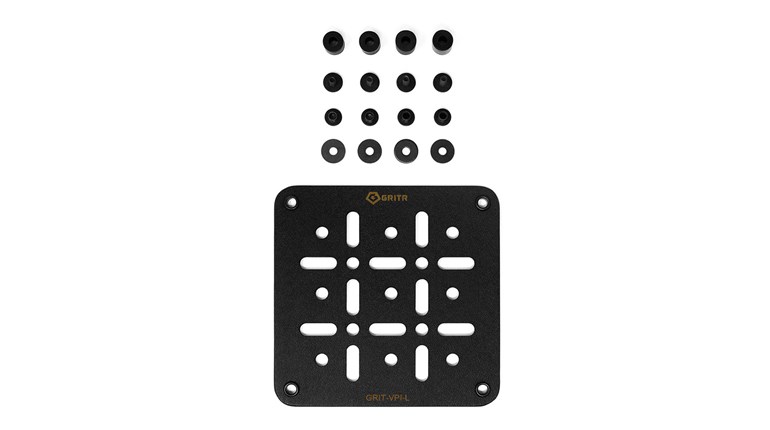
Based upon the idea of a Colt Officer’s Model, the Remington 1911 R1 Ultralight Executive is an aluminum-framed, compact 1911 pistol weighing 30 ounces and intended for discreet concealed carry. As you may recall, back in 2010, Remington jumped back into the 1911 market after a 90-year absence with its full-size version of a Government Model: the R1. Since then, the company introduced several variants, with this little concealed-carry blaster being the latest version.
I have to hand it to the folks at Remington for executing this design, as it is very well thought-out and fully featured. The pistol's black-on-black appearance features an anodized aluminum frame that matches perfectly with the black-PVD slide finish. The barrel, trigger and hammer are black as well, with the only contrast being provided by the G10 grey/black stocks secured with black screws. The front strap is nicely checkered and cut under the trigger guard for a secure grip low in the hand. The smooth grip safety is well-fitted with no offensive edges on the back of the Remington 1911 R1 Ultralight Executive, and the smooth mainspring housing is rounded in the rear, so there is no sharp corner to gouge the palm.
The magazine well is slightly beveled to help with reloading, and all the edges on parts, such as the slide lock and thumb safety, have been rounded for comfort in shooting. The trigger is exceptional—almost—breaking consistently at 3.5 pounds, but there is considerable creep before let-off followed by no over-travel. Almost perfect, but not quite, yet still no impediment to accurate shooting.

The match-grade barrel is a ramped, coned variety, and there is no barrel bushing. Curiously, a barrel-bushing wrench is included, along with two blackened seven-round magazines and an instruction manual covering the basic R1, but not the Ultralight Executive 1911. Since there are no instructions, I better go through fieldstripping: After ensuring the pistol is unloaded, retract the slide so the rounded takedown notch on the left side lines up with the top of the slide lock. Remove the slide lock from right to left and the slide can then be moved forward off the frame. Turn the slide over and lift up the rear of the guide rod and spring to free them, remove the guide rod plug to the rear and take the barrel out of the slide through the front. Reassembly is in reverse order with the caution to make sure the firing-pin safety lever located next to the ejector at the rear of the frame is in the down position.
Did I say firing pin safety? Yes, I did. This pistol uses a Series 80-style firing pin safety in addition to the thumb safety, grip safety and disconnector. The only way it will fire is if you grip it correctly, disengage the thumb safety and press the trigger.

The slide features cocking serrations in the rear (where they belong) and none in front. The night sights sitting atop the slide are the three-dot variety with small, white outlined rear dots and a considerably larger front dot. The rear sight features a U-notch, and I found the sights were dead-on for me using a conventional sight picture out to 15 yards. I dropped the ball of the front sight into the bottom of the U for center hits at 25 yards.
The rear sight is in the fashionable ledge configuration everyone seems to want these days. It’s supposed to be useful for one-handed slide racking in the unlikely event your support hand has been shot and disabled but performing this maneuver safely and effectively really requires expert instruction. The sharp edge on the front of the sight is also just waiting to rip the flesh off your palm during malfunction clearances, so caution is advised.

This little Remington 1911 R1 Ultralight Executive is very accurate, and I had no trouble shooting perfect scores on the 10-round Gunsite Academy School Drill and the 50-round Dot Torture exercise. I fired these with Remington 230-grain full metal jacket ammunition and found recoil, although brisk, to be entirely manageable.
Unfortunately, I experienced several failure-to-feed malfunctions even after I fieldstripped, cleaned and lubricated the pistol. Moving on to defensive ammunition, I fired at least one magazine each of eight different varieties. Corbon DPX and Barnes Tac-XPD, both featuring all-copper hollowpoint bullets, functioned perfectly while I experienced one or two malfunctions per magazine with each of the other brands.

The 1911 R1 Ultralight Executive is a nice little pistol and Remington almost got it perfect. With a little tweaking and testing to smooth out some of the feeding issues, I wouldn’t hesitate to carry it with the Barnes Tac-XPD load. At a suggested retail of $1,250, it is a lot of pistol for the money, but you’ll have to decide if it’s worth it to you.




































